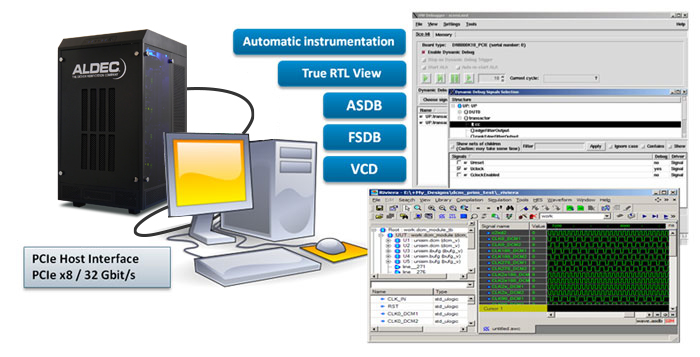
Introduction
Embedded systems play a vital role in various industries, powering devices such as medical equipment, automotive systems, and consumer electronics. However, developing and debugging these systems can be a challenging task, especially when faced with real-world constraints. In this article, we will explore the art of debugging embedded systems under such constraints. By combining technical expertise with practical examples, we will provide insights into effective debugging techniques and strategies that can help overcome the challenges faced in real-world scenarios.
I. Understanding Embedded Systems Debugging
Before diving into the complexities of debugging embedded systems, let’s begin by understanding the fundamentals of this process.
1.1 The Importance of Debugging
Debugging is an essential part of the development process, enabling engineers to identify and resolve issues in embedded systems. Effective debugging ensures that the system operates as intended, improves reliability, and enhances overall performance.
1.2 Challenges in Debugging Embedded Systems
Debugging embedded systems comes with its own set of challenges due to the constraints imposed by real-world scenarios. Some common challenges include:
1.2.1 Limited Resources
Embedded systems often operate with limited resources such as memory, processing power, and energy. These constraints can make debugging more difficult, as traditional debugging techniques may not be feasible.
1.2.2 Real-Time Constraints
Many embedded systems require real-time performance, where tasks must be completed within strict timing constraints. Debugging under real-time constraints adds complexity, as breakpoints and delays may disrupt the system’s timing behavior.
1.2.3 Non-Standard Environments
Embedded systems are often deployed in non-standard environments, such as harsh industrial conditions or remote locations. Debugging in such environments may be challenging due to limited access, restricted communication, or environmental factors affecting the system’s behavior.
II. Effective Debugging Techniques for Embedded Systems
Now that we understand the challenges, let’s explore effective debugging techniques for embedded systems under real-world constraints.
2.1 Leveraging Debugging Tools and Instrumentation
Modern development environments provide a wide range of debugging tools and instrumentation that can aid in debugging embedded systems. These tools include:
2.1.1 Integrated Development Environments (IDEs)
IDEs provide a comprehensive set of tools for writing, compiling, and debugging embedded systems. They offer features like code stepping, breakpoints, and real-time monitoring, which can greatly assist in identifying and resolving issues.
2.1.2 In-Circuit Debuggers
In-circuit debuggers allow developers to monitor and control the system’s behavior in real-time. They provide features such as on-chip debugging, real-time trace, and data breakpoints, enabling deep visibility into the system’s execution.
2.2 Using Remote Debugging Techniques
When debugging embedded systems in remote or inaccessible locations, remote debugging techniques can be invaluable. Some approaches include:
2.2.1 Remote Debugging Interfaces
Remote debugging interfaces enable developers to connect to embedded systems over networks or wireless communication channels. This allows for real-time monitoring, logging, and even remote code execution, facilitating debugging in non-standard environments.
2.2.2 Logging and Remote Logging
Logging is a powerful technique for debugging embedded systems. By strategically placing log statements in the code, developers can capture critical information about the system’s behavior. Remote logging takes this a step further by transmitting log messages to a remote location for analysis.
2.3 Using Simulation and Emulation
Simulation and emulation tools are valuable assets in the debugging toolbox for embedded systems. These tools create virtual environments that mimic the behavior of the target hardware, allowing for extensive testing and debugging without the constraints of the physical system.
III. Real-World Debugging Strategies and Case Studies
In this section, we will explore real-world debugging strategies and case studies that demonstrate the application of effective debugging techniques in embedded systems.
3.1 Analyzing System Logs and Diagnostics
System logs and diagnostics provide valuable insights into the behavior of embedded systems. By analyzing logs and diagnostic outputs, developers can identify patterns, anomalies, and potential issues. This approach was successfully applied in a medical device company, where analysis of system logs helped diagnose intermittent issues and improve system reliability.
3.2 Hardware Instrumentation and Debugging
In some cases, hardware-level debugging techniques can provide deeper visibility into the system’s behavior. This was demonstrated by a team of automotive engineers who used hardware instrumentation, such as oscilloscopes and logic analyzers, to diagnose intermittent communication failures in a vehicle’s electronic control unit.
3.3 Collaborative Debugging and Code Reviews
Collaborative debugging and code reviews can be highly effective in identifying and resolving issues in embedded systems. By leveraging the expertise of a team, developers can benefit from diverse perspectives and knowledge. A case study from a consumer electronics company showed that collaborative debugging and code reviews significantly reduced the time spent on debugging and improved the overall quality of the embedded system.
Conclusion
Debugging embedded systems under real-world constraints requires a combination of technical expertise, effective techniques, and practical strategies. By understanding the challenges inherent in embedded systems, leveraging debugging tools and instrumentation, and employing real-world debugging strategies, developers can overcome these constraints and ensure the reliability and performance of their systems. As the renowned computer scientist Donald Knuth once said, “Beware of bugs in the above code; I have only proved it correct, not tried it.” So, embrace the art of debugging, stay persistent, and let your passion for excellence guide you in creating robust and reliable embedded systems.














